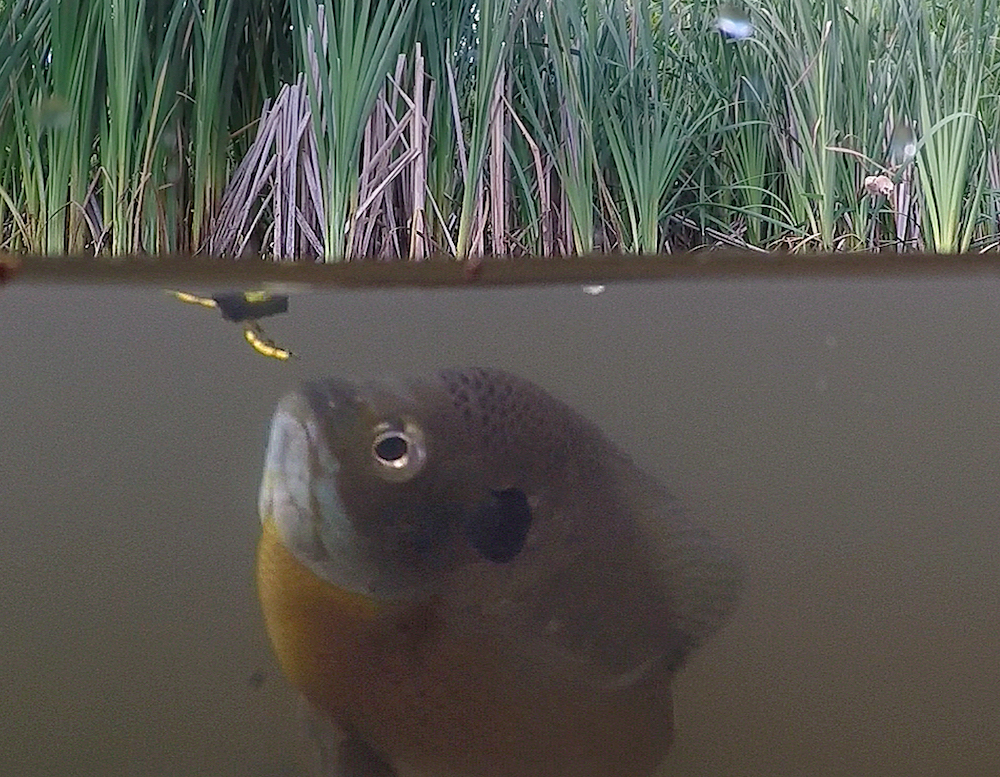
Damselfly nymph: Immature stages of damselflies are referred to as the nymphal stage. The nymphs are aquatic, moulting repeatedly as they grow, and eventually emerge as flying adults. Photo by Michael Lemke, Therkildsen Field Station at Emiquon.



Damselfly nymph: Immature stages of damselflies are referred to as the nymphal stage. The nymphs are aquatic, moulting repeatedly as they grow, and eventually emerge as flying adults. Photo by Michael Lemke, Therkildsen Field Station at Emiquon.
In the endless deep greens that stretch from the tranquil waters of The Nature Conservancy’s Emiquon Preserve in central Illinois, the colors of nature take wing.

From blue-winged teal to redhead ducks, brilliant white snow geese and pelicans to black crappie and bluegill, wildlife soars over and swims through more than 6,700 acres of rich restored floodplain.
Yet beneath that evident bounty lies another colorful, teeming world entirely: the tiniest of microscopic organisms and macroinvertebrates. Look closely enough, and you’ll find bottom-dwelling insects such as the larvae of dragonflies and beetles, microcrustaceans, and fingernail clams among the benthic community. Free-living flatworms can be found underneath rocks along the shoreline and minute, transparent zooplankton drift in the currents.
These small Emiquon residents play an outsized role in keeping this internationally important floodplain along the Illinois River healthy. They consume water-clouding algae, but also provide a critical food base for fish and waterfowl, ensuring a solid food chain and a healthy fishery.

Dr. Maria Lemke, Director of Science at The Nature Conservancy, has conducted research into the unseen micro- and macroinvertebrate worlds. Quantifying the types and numbers of these organisms at Emiquon is essential to measure the available food base that supports conservation targets such as waterfowl and fishes. These measures, or Key Ecological Attributes, assess ongoing restoration efforts of the floodplain complex along the Illinois River that ultimately guiding our management.
To establish baseline data on pre-restoration communities, Dr. Lemke and her team began collecting invertebrate samples from drainage ditches when the site was still being used for agricultural production. Since then, Dr. Lemke and scientists from University of Illinois Springfield have continued to sample representative sites with aquatic vegetation, open water, and shallower near-shore areas to track changes in community structure as restoration has proceeded.
Scientists sampled monthly over a series of years that represented pivotal phases of the restoration. Sampling was generally conducted from a boat. However, during the frozen winter months, the team walked to select sites on the ice—chipping through the ice to collect their samples. Some of the research from this program was included in a special publication of Hydrobiologia, The International Journal of Aquatic Sciences, that focused on research conducted at Emiquon by The Nature Conservancy and other scientists during the first eight years of restoration. Zooplankton data were included in one of the papers that focused on the effects of flooding at the site from the Illinois River during the 2013 flood of record. Data showed that the number of zooplankton species and diversity increased at the site after river water inundated the backwater area.

“We see so much of the natural world in the skies, waters and land at Emiquon, but what we don’t see also tells us how it is functioning and how best to protect it,” Dr. Lemke said. “Combined with the work of fellow scientists, we are creating a library of information that will help ensure that this special place will be around for future generations to experience.”
Last year, The Nature Conservancy in Illinois marked 20 years since the acquisition of Emiquon. Scientists continue to explore the wetlands, providing data and information that guide management of this unique ecosystem. Visitors may not see that science as clearly as they do the graceful soaring of a great blue heron, but it ensures perhaps the most extraordinary achievement of Emiquon’s past 20 years: its unique role as the heartbeat of a diverse and abundant community, an agile blueprint synchronizing conservation and recreation.
To plan a visit, go to nature.org/Emiquon.
Jason Beverlin is the Deputy Director of River Conservation for the Illinois Chapter of The Nature Conservancy. He graduated from Southern Illinois University at Carbondale with a degree in land management and outdoor education and has worked with TNC since 2005.
Submit a question for the author